The Joined 24-cell
The joined 24-cell is a Catalan polychoron bounded by 96 triangular bipyramids, 288 isosceles triangles, 240 edges (144 short, 96 long), and 48 vertices. It is the dual of the rectified 24-cell.
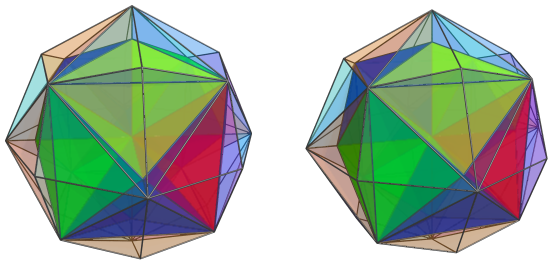
The cells are transitive, and are triangular bipyramids with an edge length ratio of √5 : 3, or approximately 0.745 : 1. Thus, they are slightly taller than the dual of the uniform triangular prism, which is also a triangular bipyramid, but with edge length ratio of 2 : 3 (approx. 0.666 : 1). The following image shows an individual cell:
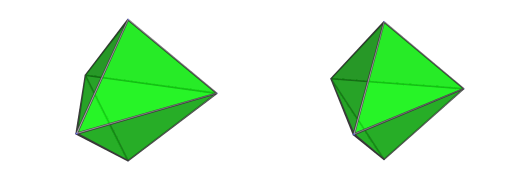
Structure
We will explore the structure of the joined 24-cell using its parallel projections into 3D, centered on an axial vertex.
The First Layer
The following image shows this nearest vertex to the 4D viewpoint:
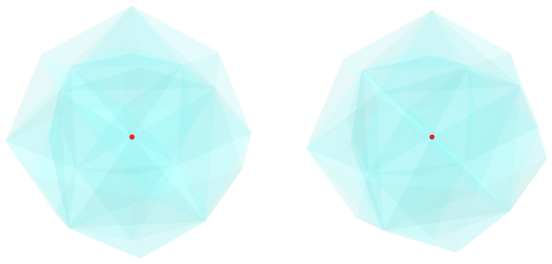
For clarity, we render the rest of the polytope in a light transparent color.
Surrounding this nearest vertex are 12 cells, shown in groups of 3 in the following images:
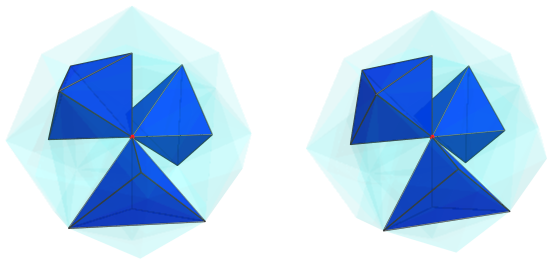
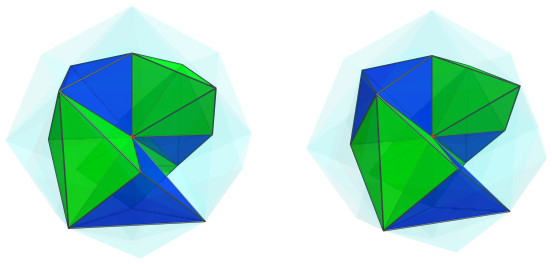
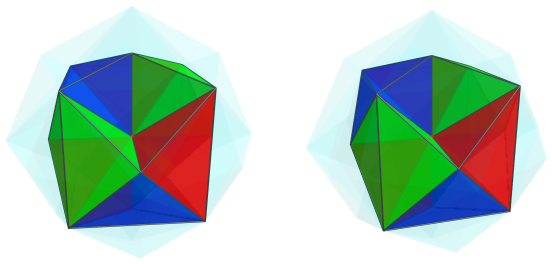
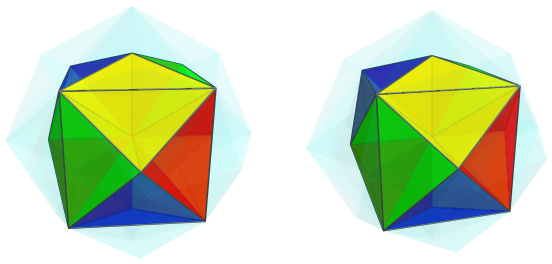
The Second Layer
Surrounding these cells are another layer of 24 cells, shown below in groups of 6:
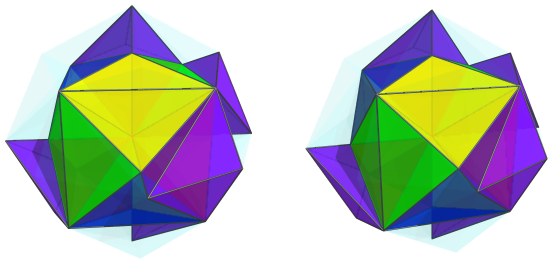
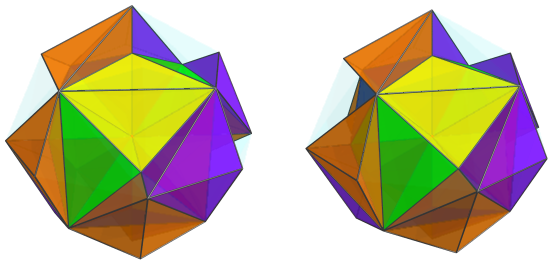
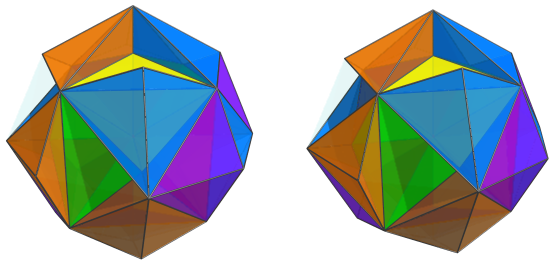
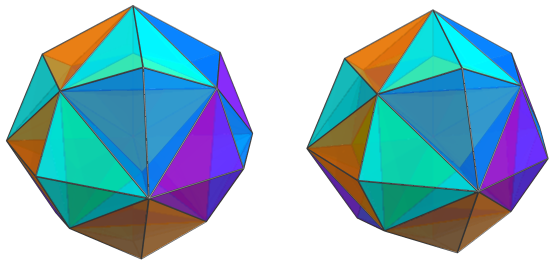
These cells look somewhat distorted because they lie at an angle with the 4D viewpoint and also in an oblique orientation. However, this is merely an artifact of the projection; they are congruent to the cells we saw earlier.
These are all the cells that lie on the near side of the polychoron, the side that faces the 4D viewpoint.
The Equator
Following this, we come to limb, or equator
, of the polytope. These
are the cells that lie at a 90° angle to the 4D viewpoint.
The following image shows 8 of them:
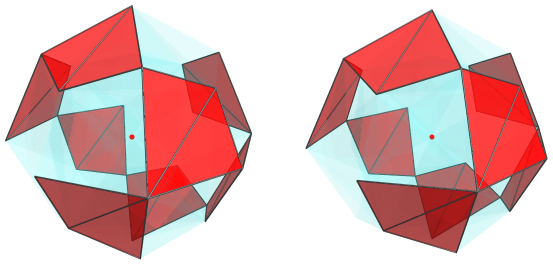
Due to their 90° angle to the 4D viewpoint, these cells have been foreshortened into kite-shaped polygons. In 4D, of course, they are full-bodied and congruent with the other cells.
For the sake of clarity, we render the other cells that we have seen before in a light transparent color.
The following images show the rest of the equatorial cells:
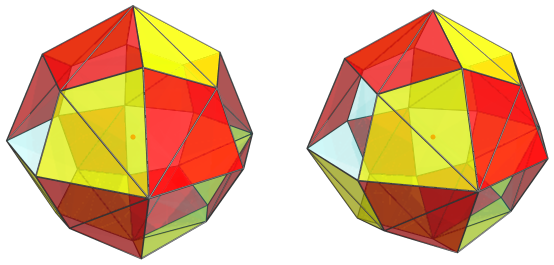
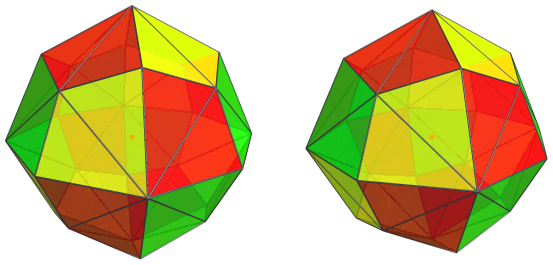
There are 24 such cells in total.
The projection envelope is a deltoidal icositetrahedron, albeit with different proportions.
Past this point, we come to the far side of the joined 24-cell, where the layers of cells repeat in reverse order from the cells on the near side.
Summary
In summary, there are 12+24=36 cells on the near side, 24 cells on the equator, and 24+12=36 cells on the far side, for a total of 36+24+36=96 cells.
Coordinates
The Cartesian coordinates of the joined 24-cell are all permutations of coordinate and changes of sign of:
- (0, 0, 0, 6)
- (0, 0, 4, 4)
- (3, 3, 3, 3)
These coordinates correspond with a dual rectified 24-cell of edge length √2/12.




